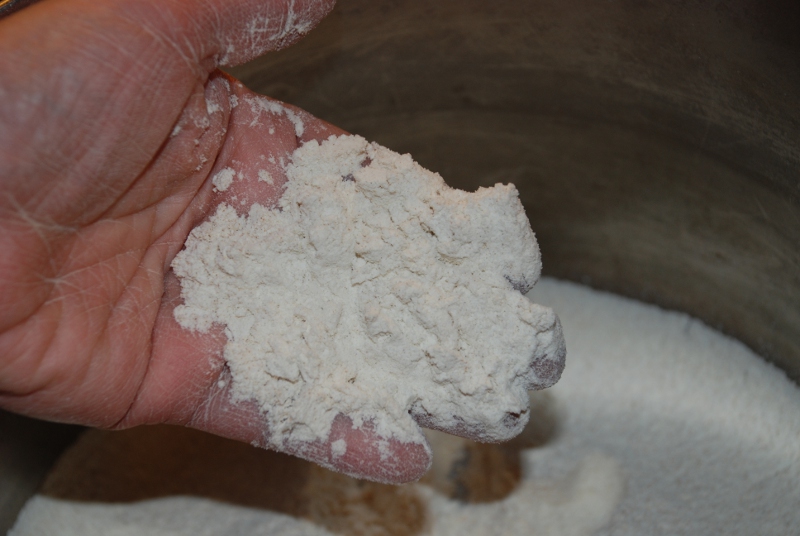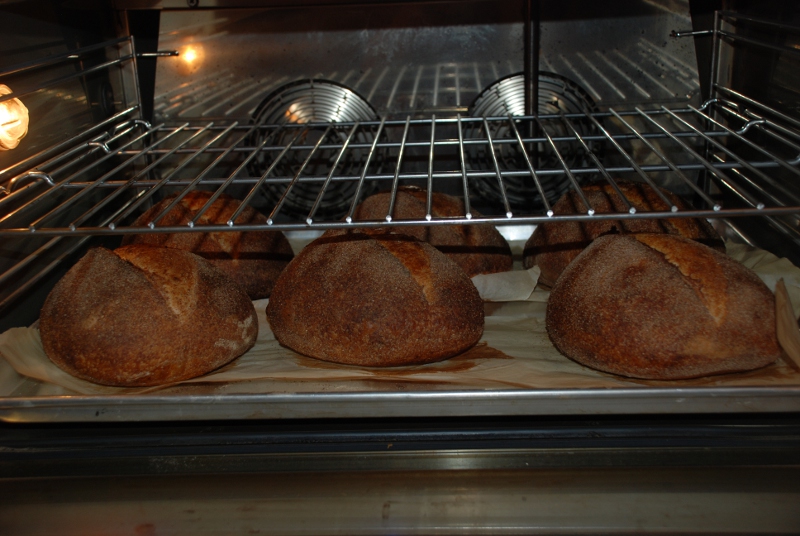Lately I have been spending a lot of time baking - a lot of time trying to execute well and less time thinking about new breads. But last week as my daughter was helping me at the Cambridge farmer's market, she jolted me out of my complacency by saying that she didn't like my pain au levain and that it was boring and I should rethink it. Aren't kids wonderful? So that sent me off browsing and thinking in the few moments when I wasn't baking, and I landed on Maggie Glezer's Thom Leonard's Country French Bread. I had no intention of making the huge loaves that she describes, and finding her formula presentation confusing, I took the general idea and put together my own formula.
This bread calls for High Extraction flour, which in the past I've found daunting. But this time around, I realized it was pretty simple. Just sift out some of the bran from whole wheat flour. In the past I tried this, but didn't realize there is a big difference between home milled whole wheat and massive machine milled whole wheat. All it took to make some very passable high extraction flour was to run some GM Stone Ground Fine Whole Wheat through a drum sieve once. It took less than five minutes. The resulting flour with bran removed weighing 16% of total (so we'll call it 84% extraction) looked almost white with golden undertones.
and some bran left over:

The resulting bread was very pleasant with a rich warm flavor and really not boring.

The Cambridge market has been keeping me very busy but added to that is a three day a week delivery to a local restaurant. This is a brand new restaurant less than a mile from me, very high quality, and I must say the chef has good taste in bread :-) He has been ordering Durum Levain and Flaxseed Rye for the dinner bread basket, and Multigrain Cranberry Sourdough for I wasn't sure what until last night. My husband and I ate there and ordered Charcuterie as an appetizer. It came with very thinly sliced toasted wedges of my Cranberry Levain. Nice!
So my day on Friday started with the flaxseed rye scald at 7:30 am. I finished the restaurant bake ten minutes before my 4 pm deadline and made the delivery, and then got started on finishing my bake for the market the next day, wrapping up around 11 pm.
I love this Durum Levain - apparently the restaurant guests like it too, but I can't sell it at the Cambridge market. Go figure.

Almost ready to go - just have to finish the Cranberries:

Finally they are all out - just a few minutes to cool before they get shipped down the hill.

The definite favorite for the Cambridge market is Multigrain Sunflower Levain. I make twelve loaves and no place to put the dough until I got this nice Cambro box:

The finished product:

I also wanted to share my new favorite - Country French Sourdough:

Now thank goodness the Cambridge market is over and I have a few weeks before the next market (much bigger) starts.
Since it was too inefficient, I shut down my little bake to order business, and now I am looking for retail outlets that will sell some of my bread. Starting some samples tonight.
A couple questions. I find myself doing a lot of hand mixing - not because I love it but for convenience to avoid moving one dough to machine mix another. What is the best way to incorporate water and flour together by hand? I haven't been satisfied with my approach. Second - if you were going to get a 20 qt mixer which could mix say 15K of dough which one would you get? There are Chinese models out for under $1000. Any good?